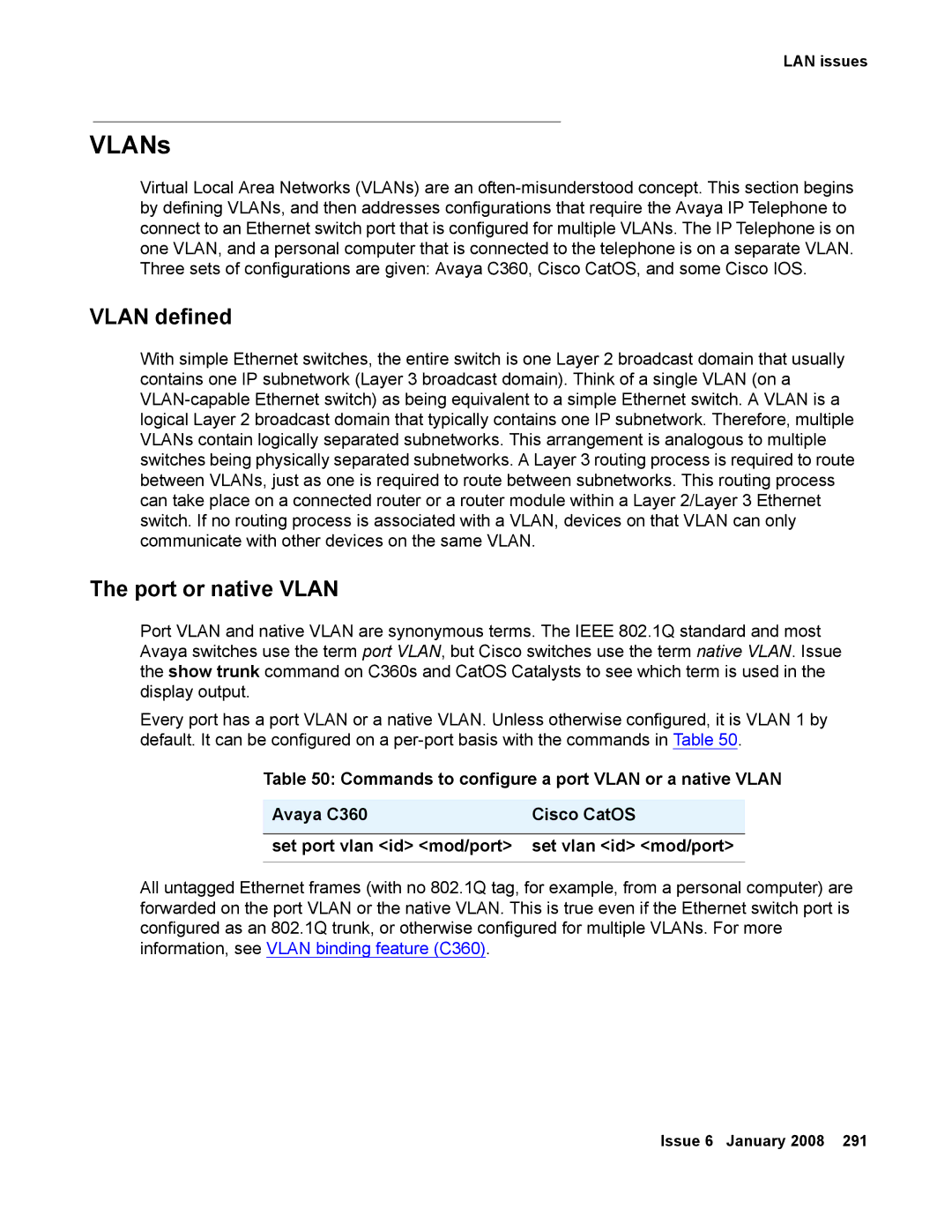LAN issues
VLANs
Virtual Local Area Networks (VLANs) are an
VLAN defined
With simple Ethernet switches, the entire switch is one Layer 2 broadcast domain that usually contains one IP subnetwork (Layer 3 broadcast domain). Think of a single VLAN (on a
The port or native VLAN
Port VLAN and native VLAN are synonymous terms. The IEEE 802.1Q standard and most Avaya switches use the term port VLAN, but Cisco switches use the term native VLAN. Issue the show trunk command on C360s and CatOS Catalysts to see which term is used in the display output.
Every port has a port VLAN or a native VLAN. Unless otherwise configured, it is VLAN 1 by default. It can be configured on a
Table 50: Commands to configure a port VLAN or a native VLAN
Avaya C360 | Cisco CatOS |
|
|
set port vlan <id> <mod/port> | set vlan <id> <mod/port> |
|
|
All untagged Ethernet frames (with no 802.1Q tag, for example, from a personal computer) are forwarded on the port VLAN or the native VLAN. This is true even if the Ethernet switch port is configured as an 802.1Q trunk, or otherwise configured for multiple VLANs. For more information, see VLAN binding feature (C360).
